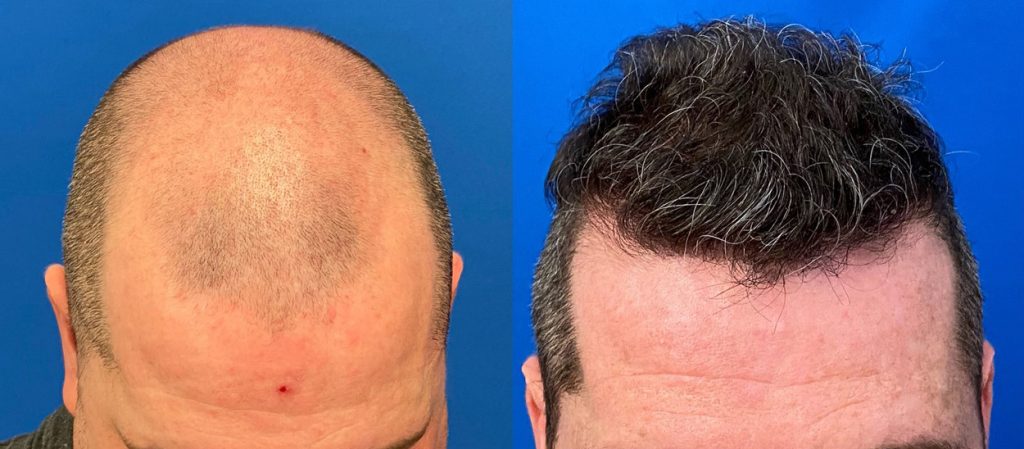For men languishing at Norwood stage 6 or 7, the arithmetic of traditional hair transplantation can feel cruelly simple: too much bald real estate, too little donor supply on the back and sides. Enter Body-Hair Transplantation (BHT)—a clever detour that taps your beard, chest, or even legs as auxiliary donor zones. Once considered experimental, BHT now offers real hope for patients once told, “There just isn’t enough hair to move.”
How Does BHT Differ from Standard FUE?
Technically, the extraction method is the same: small punches isolate follicular groups one by one. The challenge is that body hairs grow at oblique angles, sit deeper, and often emerge as single hairs rather than natural two- or three-unit bundles. Surgeons use modified punches—sometimes flared or trumpet-shaped—to avoid transecting the bulb during the deeper curve.
Why Beard Hair Leads the Pack
Among all body sites, the submandibular beard is gold. Its follicles are thick, robust, and in a growth (anagen) phase nearly 70 percent of the time—far better than chest or arm hair. Beard grafts transplanted to the scalp typically keep their coarse calibre, making them ideal for mid-scalp density boosts or crown coverage, where texture mismatch is less conspicuous.
Ideal Candidates
- Advanced Norwood 5-7 with depleted scalp donor reserve.
- Strong, dense beard or chest growth offering at least 3,000 usable grafts.
- Similar colour contrast between scalp and body hair; dark chest hair on a fair scalp can look patchy.
- Realistic expectations—BHT improves coverage, not teenage density.
Surgical Strategy: Blending, Not Blanketing
The best surgeons mix body and scalp grafts strategically:
| Scalp Zone | Preferred Graft Source | Rationale |
| Hairline & temples | Pure scalp follicles | Finer texture blends naturally |
| Mid-scalp | 70% scalp + 30% beard | Added bulk with good camouflage |
| Crown | Up to 50% beard/chest | Coarser fibre less noticeable in whirl pattern |
This mosaic prevents the “doll-hair” effect once seen in early chest-hair experiments.
What Results Can You Expect?
Survival rates vary by source:
- Beard-to-scalp: 80–90 percent graft take in experienced hands.
- Chest-to-scalp: 60–70 percent, partly because chest follicles spend more months in resting phase.
Even at lower yields, body hair can add valuable visual coverage—think shading a bald canvas rather than painting thick strokes.
Recovery Realities
Donor redness on the beard fades in three to five days, but small white dots may persist under close inspection. Chest extraction sites can feel like mild razor burn for a week. Recipient-area aftercare mirrors standard FUE: saline sprays, gentle shampooing, avoiding hats for ten days.
Downsides and Limitations
- Two Surgical Fields
Operating on scalp and body simultaneously stretches total chair time; full restorations may span two or three days. - Texture Mismatch
Beard hair is wiry. If placed too far forward, it can look unnatural. Artistic blending is everything. - Higher Cost
The extra time and specialised punches translate to a 20–30 percent premium over scalp-only FUE. - Variable Yield
Chest and leg follicles have shorter growth cycles; some may grow long-term, others stay short and wispy.
Maximising Your Outcome
- Patch Test First – Some clinics transplant fifty beard grafts into a discreet crown spot to gauge texture match.
- Combine Medical Therapy – Finasteride or dutasteride preserves existing scalp hair, so fewer body grafts are needed.
- Prioritise Shading, Not Perfection – Think of BHT as filling the backdrop; a small strip of scalp donor can still craft a refined hairline.
- Be Patient – Body grafts sometimes sprout later; final density may not reveal itself for twelve to eighteen months.
The Bottom Line
Body-Hair Transplantation is not a miracle cure, but it extends the transplant frontier for men who once had no surgical hope. In skilled hands, beard and chest follicles can rebuild a framing hairline, soften harsh bald zones, and restore a sense of wholeness. For the severely depleted donor, that lifeline can be life-changing: a chance to swap defeat for confidence, one unconventional graft at a time.

